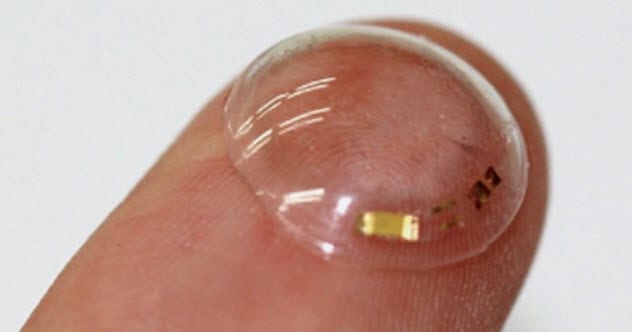Then there are the mysteries, like why some people cry more on planes while others cry when they pee. Discoveries in this field are stunning. From the unexpected beauty of magnified tears to keeping tabs on diabetes in real time, the future of human crying is both weird and scientifically valuable.
10 Sign Of Defenselessness
Nobody knows why we cry, but the theories are legion. Obviously, there is an emotional element. At other times, tears are produced as protection against dust and smoke. In 2009, an evolutionary biologist looked at it from a survival angle and asked, “What evolutionary benefit does crying offer?” Oren Hasson’s analysis suggested that it showed defenselessness but in a good way. Physical signs of helplessness, like crying, are not threatening signals. As such, tears could mitigate violence better than an argument. Tears also evoke sympathy in others, and any protection increases the individual’s chances of survival.[1] Additionally, people crying together may strengthen bonds. Hasson readily admitted that it might only be effective in certain situations. Obviously, bawling in front of one’s boss will not provoke a sympathetic salary increase.
9 Why Happiness Brings Tears
Crying is mostly associated with negative emotions like grieving and sadness. However, people cry at weddings and even when they win the Olympic gold medal. As it turns out, the brain cannot tell negative and positive emotions apart when it comes to turning on the waterworks. The hypothalamus, an almond-sized region, just reacts to the overwhelming flood of emotion. It fails to detect the stress or joy behind the flood. Either one is merely a powerful signal from the amygdala, our emotional register. Once the hypothalamus receives the signal, it activates the autonomic nervous system. The gold winner and the guy who lost the race cry for different reasons, but remarkably, their brains’ dominoes fall in exactly the same sequence.[2]
8 Why Onions Make You Cry
Few people like chopping onions. This evil vegetable makes the eyes weep copiously, and the eyelids sometimes shut of their own accord. Why does this happen? The answer is somewhat hilarious. The onion is defending itself. The damage brought on by cutting releases a chemical designed to put off whatever animal is trying to eat it. The chemical is called propanthial s-oxide. Once it escapes the onion’s damaged cells, it evaporates and drifts upward. Hitting the eye, the compound dissolves in the water covering the organ and turns into sulfenic acid. This irritates the tear gland and produces the famous “my eyeballs are on fire” feeling.[3] Luckily, the acid is not enough to cause harm. Not all onions bite back with the same ferocity. Although the reasons remain unclear, it could have something to do with how much sulfur the onion absorbed while growing in the earth.
7 The Virgin Atlantic Survey
When Virgin Atlantic did a survey in 2011, the results were clear. People experienced heightened emotions while flying, and air travel causes more crying. Around 41 percent of the male volunteers admitted that they secretly cried under their blankets while on a plane. There are no serious scientific studies unraveling why zooming through the air in a metal tube brings on the waterworks—although that could explain some of it. Being confined thousands of feet up in the sky while fearful of a crash could grate on anyone’s nerves. Other elements could involve missing loved ones, boredom breeding the wrong emotions, and drinking. Sometimes, flying also causes mild oxygen deprivation and that could mess with decisions and thoughts. Throw in the difficult horrors of airport rules and traffic, and the mind is tired before the passengers even board. Virgin Atlantic could not find the cure, but they kindly included “emotional difficulties” as something to be aware of during their preflight preparation talk for passengers.[4]
6 Tears Could Generate Electricity
Lysozyme is an enzyme in human tears, egg whites, saliva, and the milk of mammals. When crystallized, it exhibits the potential for piezoelectricity. This energy is produced by certain substances under pressure. One example is quartz crystal. In 2017, scientists made the first attempt to test whether lysozyme really could produce electricity. To have the potential was one thing, but it was quite another to generate an actual current. The protein was smeared over films which were subjected to mechanical force. When the readings were recorded, the results showed that the enzyme sparked power on par with quartz.[5] Lysozyme has the more exciting benefit of being biological and nontoxic. This promises perks in the biomedical field, especially with implants in need of antibacterial and electroactive coatings. One day, it might even power devices inside the human body.
5 The Shower Cry
The so-called shower cry happens when people snot it out in the shower. This weeping location is said by some to be as satisfying as it is common. Researchers admit that it is a difficult situation to study. One cannot exactly watch somebody perform a genuine shower cry. The answer might be a mix of logic and social psychology. Most adults do not like to cry in public. Showering feels good and cleansing. The bathroom makes a good choice for those seeking comfort and privacy. Needless to say, the sound of the water muffles sobs really well. A wide study backed up this need to cry away from the public eye. Psychologist Lauren Bylsma analyzed information from 35 countries involving 5,096 people. It found that when a bout of crying occurred, around 62 percent of the participants waited until they were at home and 35 percent only wept when there was nobody around to see them.[6]
4 Tears Are Unique
At first glance, tears look the same. They are colorless blobs which, thanks to gravity, are slightly thicker at the bottom and smeared at the top. However, tears have three types. Called reflex, basal, and emotional tears, each kind is a distinct cocktail of antibodies, oils, and enzymes. The true uniqueness of tears can be seen under the microscope. In 2015, Dutch artist Maurice Mikkers invited friends over to cry. They donated tears by looking into a fan, nibbling hot peppers, cutting onions, or becoming emotional. Mikkers captured the drops with a micropipette, placed them on a slide, and allowed them to crystalize. Once they did, he photographed the tears. Incredibly, they behaved like snowflakes. Each was filled with beautifully complex designs, including leaf-shaped crosses. Even when the same stimulant was used, the tears showed individual character.[7]
3 Using Tears To Test Glucose
For years, inventors have searched for a better way to test for glucose. Diabetics can attest to the fact that the self-administered fingerprick test is invasive. In 2018, South Korean researchers took an innovative step in the right direction. They tested a special contact lens on rabbits which tracked glucose levels without harming the eye. Monitoring in real time, it had a tiny green LED that switched off when glucose spiked. The device was soft and flexible and used tears instead of blood to test glucose levels. It was also comfortable to wear and did not interfere with vision despite packing an antenna, rectifier, and lots of superthin wires. All the parts were one-hundredth the thickness of the lens and were situated on the outer edge.[8] To see whether the LED was on or off, a person would have to look in the mirror. But this still beats constant fingerpricks. The device is not yet available to the public, but according to researchers, it is only a matter of time.
2 People Who Cry While Peeing
In 2009, British doctors first became aware of a mysterious syndrome when parents brought their three-year-old girl for examination. When she peed, her symptoms included tears but no crying. She also had a vacant expression, and her jaw slackened. She was in perfect health. To learn more about the unprecedented case, they scoured medical literature and found one other patient. In 1932, a man experienced tears whenever he peed or defecated. A tour through online rooms also revealed that at least 35 other people had the condition. None had felt the need to seek medical attention. The 1932 case was successfully treated with atropine, which sedates nerves. It was a good clue. Investigators found a condition called Bell’s palsy in which damaged or diseased nerves regrow and wrongly connect with the tear gland. When such people ate, they “wept.” It is plausible that another nerve abnormality causes tears during urination. Another possibility is that the condition originates in the brain. Both tear production and peeing are controlled by the same neural region called the pons.[9]
1 Chemical Communication
In 2011, researchers tracked down women who confessed to crying easily. This was necessary because the study involved men sniffing female tears. After researchers captured the women’s tears (they watched something sad), the liquid was presented to guys who also smelled saline water. They could not tell the difference between the two, but the tears had an unusual effect. It lowered the men’s libido and testosterone, an effect that occurred even though they never saw the women cry. This is the first evidence that humans communicate chemically with their tears. For now, researchers feel that the signal says “no” when a woman is not as sexually aroused as a man. The scenario of a woman crying with happiness when her soldier husband returns from service abroad—and romance is in the cards—suggests that only sad tears carry this unidentified and powerful chemical. Interestingly, when smelling the tears of men who watched a depressing video, the male sniffers also experienced a dip in testosterone and sexual arousal.[10] Read More: Facebook Smashwords HubPages
























